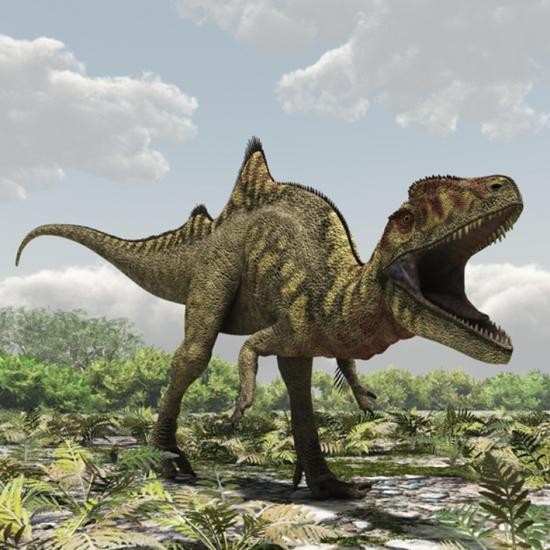Post by dinosauria101 on Feb 25, 2019 18:27:41 GMT 5
Cervalces latifrons
Cervalces latifrons, the broad-fronted moose, was a large, moose-like deer of the holarctic regions of Europe and Asia dating from the Pleistocene epoch. It is believed to be the largest species of deer that ever existed, larger than its North American relative Cervalces scotti, Megaloceros, and the modern moose. This species is believed to have become extinct around 10,000 years ago. The average sized Cervalces latifrons was quite a bit more massive than other large moose-like deer, such Cervalces scotti, the largest races of the extant moose and the Irish elk (Megaloceros giganteus), despite some overlap in shoulder height, and is the largest deer ever known to exist. C. latifrons is estimated to have averaged 2.1 m (6 ft 11 in) high at the shoulder. Body mass of C. latifrons was around 1,000 kg (2,200 lb), putting it around 30% heavier than C. scotti. In some cases, this species could've weighed perhaps up to 1,200 kg (2,600 lb) with the largest specimens perhaps reaching 2.5 m (8.2 ft) at the shoulder. It was about the same mass and far taller than a modern bull American bison (Bison bison) and could've weighed about twice as much as the Irish elk (Megaloceros giganteus) but the span of its antlers at 2.5 m (8 ft 2 in) was smaller than that of the elk. Fossil remains of this deer are known from northern Europe and Asia. It is likely to have had a similar diet of bark, leaves and shoots of trees such as willow, aspen, rowan, birch, oak, larch and pine. It would also have grazed herbaceous vegetation in the boggy areas on the floors of valleys. Its limbs were long and show adaptations allowing for locomotion at a fast trot.
.jpg)
Concavenator corcovatus
Concavenator is a genus of theropod dinosaur that lived approximately 130 million years ago during the early Cretaceous period (Barremian stage). The type species is C. corcovatus; Concavenator corcovatus means "hump backed hunter from Cuenca". The fossil was discovered in the Las Hoyas fossil site of Spain by paleontologists José Luis Sanz, Francisco Ortega and Fernando Escaso from the Autonomous University of Madrid and the National University of Distance Learning. Concavenator was a medium-sized (roughly 6 meters (20 feet) long, and 500 kg (1,100 lbs) primitive carcharodontosaurian dinosaur possessing several unique features. Two extremely tall vertebrae in front of the hips formed a tall but narrow and pointed crest (possibly supporting a hump) on the dinosaur's back. The function of such crests is currently unknown. Paleontologist Roger Benson from Cambridge University speculated that one possibility is that "it is analogous to head-crests used in visual displays", but the Spanish scientists who discovered it noted it could also be a thermal regulator.

Credit to Wikipedia
Cervalces latifrons, the broad-fronted moose, was a large, moose-like deer of the holarctic regions of Europe and Asia dating from the Pleistocene epoch. It is believed to be the largest species of deer that ever existed, larger than its North American relative Cervalces scotti, Megaloceros, and the modern moose. This species is believed to have become extinct around 10,000 years ago. The average sized Cervalces latifrons was quite a bit more massive than other large moose-like deer, such Cervalces scotti, the largest races of the extant moose and the Irish elk (Megaloceros giganteus), despite some overlap in shoulder height, and is the largest deer ever known to exist. C. latifrons is estimated to have averaged 2.1 m (6 ft 11 in) high at the shoulder. Body mass of C. latifrons was around 1,000 kg (2,200 lb), putting it around 30% heavier than C. scotti. In some cases, this species could've weighed perhaps up to 1,200 kg (2,600 lb) with the largest specimens perhaps reaching 2.5 m (8.2 ft) at the shoulder. It was about the same mass and far taller than a modern bull American bison (Bison bison) and could've weighed about twice as much as the Irish elk (Megaloceros giganteus) but the span of its antlers at 2.5 m (8 ft 2 in) was smaller than that of the elk. Fossil remains of this deer are known from northern Europe and Asia. It is likely to have had a similar diet of bark, leaves and shoots of trees such as willow, aspen, rowan, birch, oak, larch and pine. It would also have grazed herbaceous vegetation in the boggy areas on the floors of valleys. Its limbs were long and show adaptations allowing for locomotion at a fast trot.
.jpg)
Concavenator corcovatus
Concavenator is a genus of theropod dinosaur that lived approximately 130 million years ago during the early Cretaceous period (Barremian stage). The type species is C. corcovatus; Concavenator corcovatus means "hump backed hunter from Cuenca". The fossil was discovered in the Las Hoyas fossil site of Spain by paleontologists José Luis Sanz, Francisco Ortega and Fernando Escaso from the Autonomous University of Madrid and the National University of Distance Learning. Concavenator was a medium-sized (roughly 6 meters (20 feet) long, and 500 kg (1,100 lbs) primitive carcharodontosaurian dinosaur possessing several unique features. Two extremely tall vertebrae in front of the hips formed a tall but narrow and pointed crest (possibly supporting a hump) on the dinosaur's back. The function of such crests is currently unknown. Paleontologist Roger Benson from Cambridge University speculated that one possibility is that "it is analogous to head-crests used in visual displays", but the Spanish scientists who discovered it noted it could also be a thermal regulator.

Credit to Wikipedia


